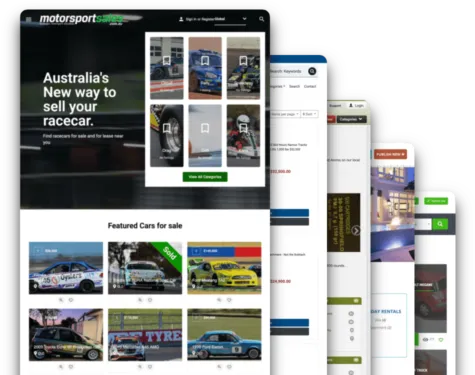As we all know, the marketplace is booming, and it is undeniable that a marketplace business strategy can bring in more than enough money for its owner. However, you might wonder, before creating a marketplace website, you should ask yourself this question. “How will I make money from my online marketplace?”
When you look at the most well-known markets, such as Emay, Amazon, or Uber, you'll realize that they all have one thing in common. They are massive, profitable businesses with a global presence and hundreds of thousands of vendors, consumers, and users.
Instead, you'd look for smaller markets that are more aligned with your company's strengths and goals. However, an examination of their financial model reveals that, regardless of scale, all (or the vast majority) markets have used fairly similar solutions.
So let us take a look at the most typical revenue streams for online markets are as follows:
Listing fee:
A new marketplace revenue strategy can be used instead of charging customers for signing up. If the main function of your marketplace is to generate leads for businesses, you might want to explore charging suppliers for access to customers.
Users may be required to pay the marketplace owner to list their goods or services. It is quite a transparent payment option as the marketplace has its own strictly defined stakes for multiple products.
Commission:
One of the most common business models is the commission model. Product markets are the ones who use it the most, and service marketplaces are the ones who utilize it the least.
The main concept is that the marketplace owner or manager earns a portion of the transaction that takes place on an online platform that was previously agreed upon.
If one were to compare how huge brands use it in their day-to-day operations, this could be dubbed the most prevalent marketplace payment strategy.
Subscription fee:
A marketplace that uses the subscription model costs consumers a regular fee to access the site. To sell or buy, merchants, customers, or both pay for membership.
Subscription tiers might be classified as starter, pro, or premium. The idea is to attract a wide spectrum of merchants and customers to subscribe.
The marketplace owner receives money from registered customers regularly in this approach. The cost of membership varies the more exclusive the membership, the more alternatives accessible, the higher the cost.
Users are typically acquired for a longer period. It's the same as investing less money on marketing, remarketing, and social media efforts to activate marketplace consumers who have already paid for a membership. Instead, the marketing spend may be used to bring in new customers.
Here is one example of how to create a membership subscription with Yclas.
https://guides.yclas.com/#/Plugins-membership-plans-to-post
Featured listings and ads:
Providers can buy additional visibility for their offerings by purchasing featured listings. Listing on the site is normally free under this model, but providers can pay to have their listing promoted on the homepage of the site or at the top of a certain category.
This marketplace business model is similar to pure advertising methods, in which you display advertisements to your users.
You can highlight vendor profiles and items on the main page, and include sponsored products on other product pages, to offer a product or service more visibility.
How to create featured plans for customers' featured ads with Yclas.
https://guides.yclas.com/#/Payment-featured-plans

